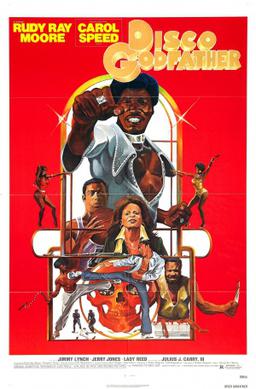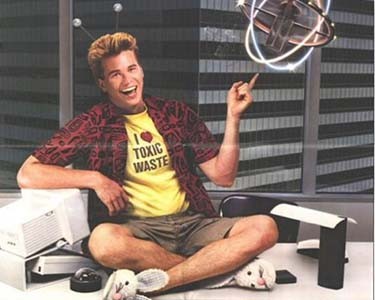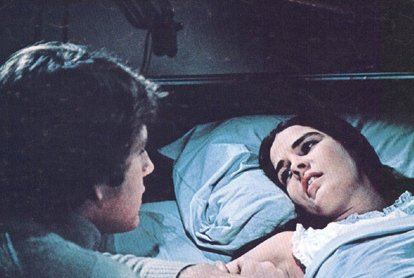A
Guide to the Interesting and Unusual on TCM
By
Ed Garea
It
was a really good October on TCM, what with the continuing Story
of Film and the rarely seen foreign films TCM chose to
accompany it. That pretty much continues this month, so search your
TCM guides for anything rare and interesting you haven’t yet seen,
or for the grace of TCM, may never see. Unless, that is, you want to
shell out big dough that you don’t have to The Criterion Collection
for a rarely seen Chinese-Japanese-Vietnamese-Indian-Pakistani
collaboration you’ll only watch once and then put away to collect
dust. I’ve got to be honest, there are many films currently being
shown I’m glad to TiVo, but after watching them, with few
exceptions, these are not the sort I’d want for my permanent
library. I’m risking almost certain exile from the film snobs’
society for this heresy, but, to me, films are primarily
entertainment.
I
like to collect film that I know I’ll want to see again, such as
classic horror and sci-fi, films by Hawks, Hitchcock, Truffaut,
Melville, Ozu; classics with Cagney, Bogart, Gabin, Lancaster,
Stanwyck, and Bette Davis; screwball comedies, Poverty Row movies,
especially Monogram and PRC, B-Westerns with George O’Brien and
Buster Crabbe, and especially early ‘30s movies. Those I’ve been
interested in since high school, when I noticed they were more risqué
in subject matter than later films. But that’s just me. I always
figured I’m stuck with me, so I might as well make the best of it.
Events
to look forward to in November:
Star
of the Month: Burt Lancaster. A great choice as far as I’m
concerned, as I can always finds the time to watch one of his films,
and there are some good ones to choose from this month. On November
6, TCM is showing the always watchable The Killers from
1946, but following is one of his best and most underrated
films, Come Back, Little Sheba, from 1952. On November
13, my choice Lancasters are the fantastic Sweet Smell of
Success (1957) at 10:15 pm, and Seven Days in
May (1964) at the rather late hour of 2:30 am (set those
recorders).
November
1 – The Friday Night Spotlight this month is
devoted to screwball comedies, and TCM is showing six of them
beginning with It Happened One Night at 8 pm. My pick is
the seldom seen The Mad Miss Manton from 1938,
starring Barbara Stanwyck as a publicity-seeking daffy socialite who,
along with her friends, stumbles upon a murder. But no one will
believe her. Henry Fonda is excellent in a co-starring role as a
doubtful newspaper editor who slowly is won over.
On November
2 a documentary called Free Radicals: A History of
Experimental Film is being shown at – get this – 2:30 in
the morning. I can’t say I blame them at TCM, for who would really
want to watch this except insomniacs? It’s followed by a slew of
experimental shorts, none of which I’ve seen before, so I can’t
really give you a guide.
November
3 is given the title of “Same Story,” and it’s all
about movies about prostitutes. Now this is a night that demands a
guest host, and given the content, there’s no better guest host I
can recommend than Velvet Jones, the pimp Eddie Murphy played on the
old Saturday Night Live, and who wrote a book, “I Wanna
Be a Ho.” The night begins with Rita Hayworth as Miss Sadie
Thompson (1953), followed by Joan Crawford in the original film
adaptation of Somerset Maugham’s story, Rain (1932).
Check out Joan’s make-up in the movie. It gives new meaning to the
word “garish.” This is followed by the 1934 Chinese silent
Goddess, previously shown last month, and two Japanese
films, Story of a Prostitute, a New Wave drama from
director Seijun Suzuki (1965), and Women of the Night, a
1948 film from Kenji Mizoguchi. Both Japanese productions are
recommended. Story is a remake of Toho’s 1950
melodrama, Escape at Dawn (scripted, by the way, by
Akiro Kurosawa). Those who have sat through some other Suzuki
melodramas such as Tokyo Drifter and Branded
to Kill will notice this is a film where the plot is
actually placed ahead of style.
November 5 is dedicated to the 100th birthday of the great Vivien Leigh and a representative selection of her films is being presented. For me, the pick of the litter is Storm in a Teacup, a pleasant English comedy with Rex Harrison from 1937.
November
7: “Nurse Night,” five films about nurses. My best bet
is the 1939 programmer Four Girls in White.
November
8: More screwball comedies, beginning with the Leo McCarey
classic, The Awful Truth, starring Cary Grant and Irene
Dunne. My money’s on MGM’s 1941 Love Crazy, with
William Powell as a husband who concocts one crazy scheme after
another to keep wife Myrna Loy from divorcing him.
November 9: For those who can’t resist good psychotronic Blaxploitation films, TCM Underground is showing a double-header of Disco Godfather (1979) and The Slams (1973). The one to watch here is Disco Godfather, with the amazing Rudy Ray Moore in the starring role. In this one, he plays a retired LAPD detective who is now running a disco. When his NBA-bound nephew winds up in the psych ward after smoking angel dust, Rudy Ray takes to the streets as only Rudy Ray can to eliminate the drug traffic. Great fun.
November
12: Guest Programmer Simon Helberg (The Big Bang Theory)
hosts a night of some of his favorite films, beginning with Blake
Edwards’ The Party (1968) with Peter Sellers as an
Indian actor who makes a shambles of a Hollywood party. It’s
followed by Sellers’ Dr. Strangelove at 9:45, and
then changes gears with the classic 1945 romance Brief
Encounter.
November
14 is devoted to “Bob’s Picks,” and Bob Osborne always
shows something interesting. The pick of the night for me is the
lead-off film, My Name is Julia Ross, a nice terse little
film from Joseph H. Lewis and Columbia in 1945. It’s definitely
worth your time.














